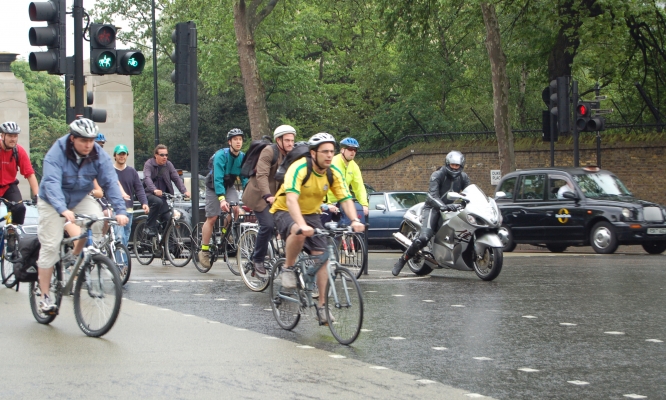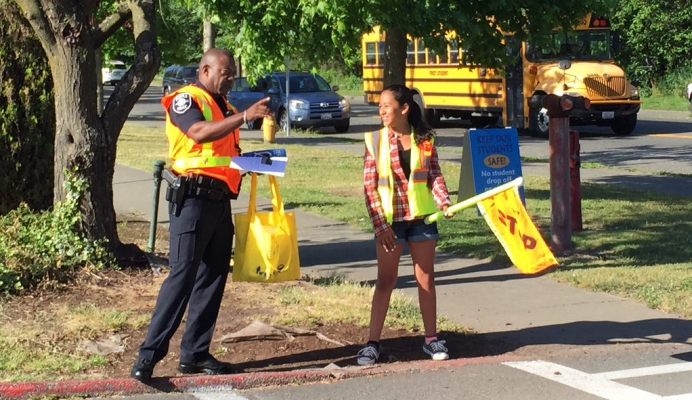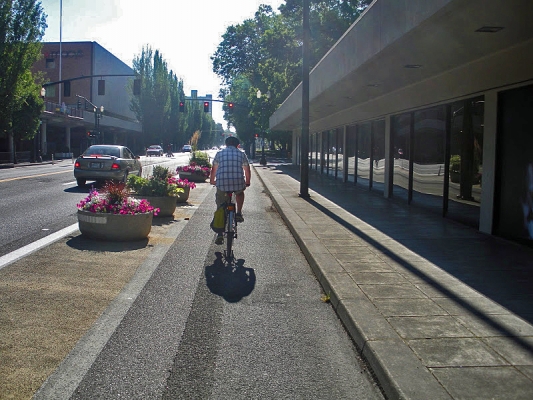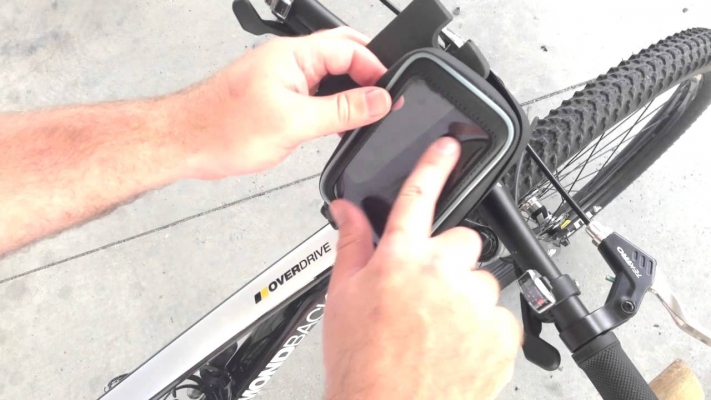View slides
Watch video:
Some researchers have tried to categorize cyclists’ levels of traffic stress utilizing facility or traffic data that can be readily measured in the field, such as motorized travel lanes, travel speeds, and type of bicycle infrastructure.
This seminar will present data and modeling results utilizing two novel data sources:
(a) real-world, on-road measurements of physiological stress as cyclists...
Read moreConceptual and Embedded Transportation Engineering Knowledge:
Student, Practitioner, and Faculty Context and Understanding of Sight Distance and Stopping Sight Distance
The video begins at 0:30.
Watch video:
Many cities are considering pursuing Vision Zero to eliminate traffic deaths, but may not know how to move beyond addressing past crash locations toward preventing future crashes. Systemic analysis, which looks at crash patterns to determine common characteristics associated with various types of crashes, shows promise in helping cities to identify problematic locations and...
Read moreSummary: The most recent edition of the Highway Capacity Manual (HCM) contains analysis procedures for measuring the level-of-service (LOS), also referred to as quality of service, provided by an urban roadway to bicyclists. The method uses different design and operating features of the roadway segment (e.g. width, motor vehicle volumes and speeds) to assess an LOS grade of A (best) to F (worst). These procedures are used by planners and engineers to recommend how existing streets could be retrofitted or new streets designed to better serve people on bicycles (and other modes). However, the current HCM does not include methods that address protected bike lanes (aka “cycle tracks” or “separated bike lanes”), only conventional striped bike lanes, shoulders, and shared streets. There are other methods for predicting comfort from a bicyclist’s perspective that do consider protected bike lanes, but they are either based only on expert opinion or on surveys in Denmark.
This presentation will describe how to evaluate the level-of-service of a protected bike lane using results from surveys conducted in the United States. The model developed by this project could be used to supplement the current HCM to objectively consider a wider...
Read moreThe video begins at 1:39.
View slides
Ronald Tamse is a traffic engineer for the city of Utrecht, The Netherlands. Ronald has been involved in traffic design in Amsterdam and Utrecht. He is most interested in bicycle and rail transportation. He has worked on the design of the Amsterdam subway, a light rail system in Utrecht, and is currently working on urban transportation solutions as Utrecht Centraal is redeveloped. Utrecht Centraal is the largest train station in The Netherlands.
Ronald will highlight key examples from Utrecht that show some new ideas, similarities between the Dutch and American approaches, as well as a few lessons imported from Portland. These examples will share highlights from major projects that include building a new commuter railway network, including the rebuilding of Utrecht Centraal railway station, and the development of a light rail line in Utrecht that uses MAX as a development model. In addition, Ronald will demonstrate the importance of connecting bike infrastructure through network planning, infrastructure, and connections to transit.
Watch video
View slides
ORcycle is a new smartphone application (for both Android and iOS) developed by Transportation, Technology, and People (TTP) lab researchers at Portland State University as part of an Oregon Department of Transportation (ODOT) research project. ORcycle collects user, route, infrastructure, crash, and safety data. ORcycle was successfully launched in early November 2014 and presents many improvements over existing or similar apps. Initial data findings and insights will be presented. Lessons learned as well as opportunities and challenges associated with smartphone data collection methods will be discussed. More information about the app can be found here: http://www.pdx.edu/transportation-lab/orcycle
Read moreView slides
Watch video:
Car crashes are still a leading cause of death in the United States, with vulnerable road users like bicyclists and pedestrians being injured or killed at rates that outpace their mode share.
Planners, engineers, and advocates are increasingly adopting Vision Zero and Tactical Urbanism approaches and trying to better understand the underlying causes...
Read moreThe video begins at 2:59.
Abstract: The New Energy Vehicles (NEVs) industry has become one of the national strategically rising industries in China under the pressure of energy safety and environment protection. In order to promote the use of new energy vehicles, China is now launching a big campaign, called "New Energy Vehicle 'Ten Cities & Thousand Units Demonstration' Plan". This presentation will be focused on the background, progress and some key issues to be addressed during the implementation of the demonstration plan. Specific cases of Shanghai, including the Expo demonstration and Chongming Island demonstration will also be mentioned.




